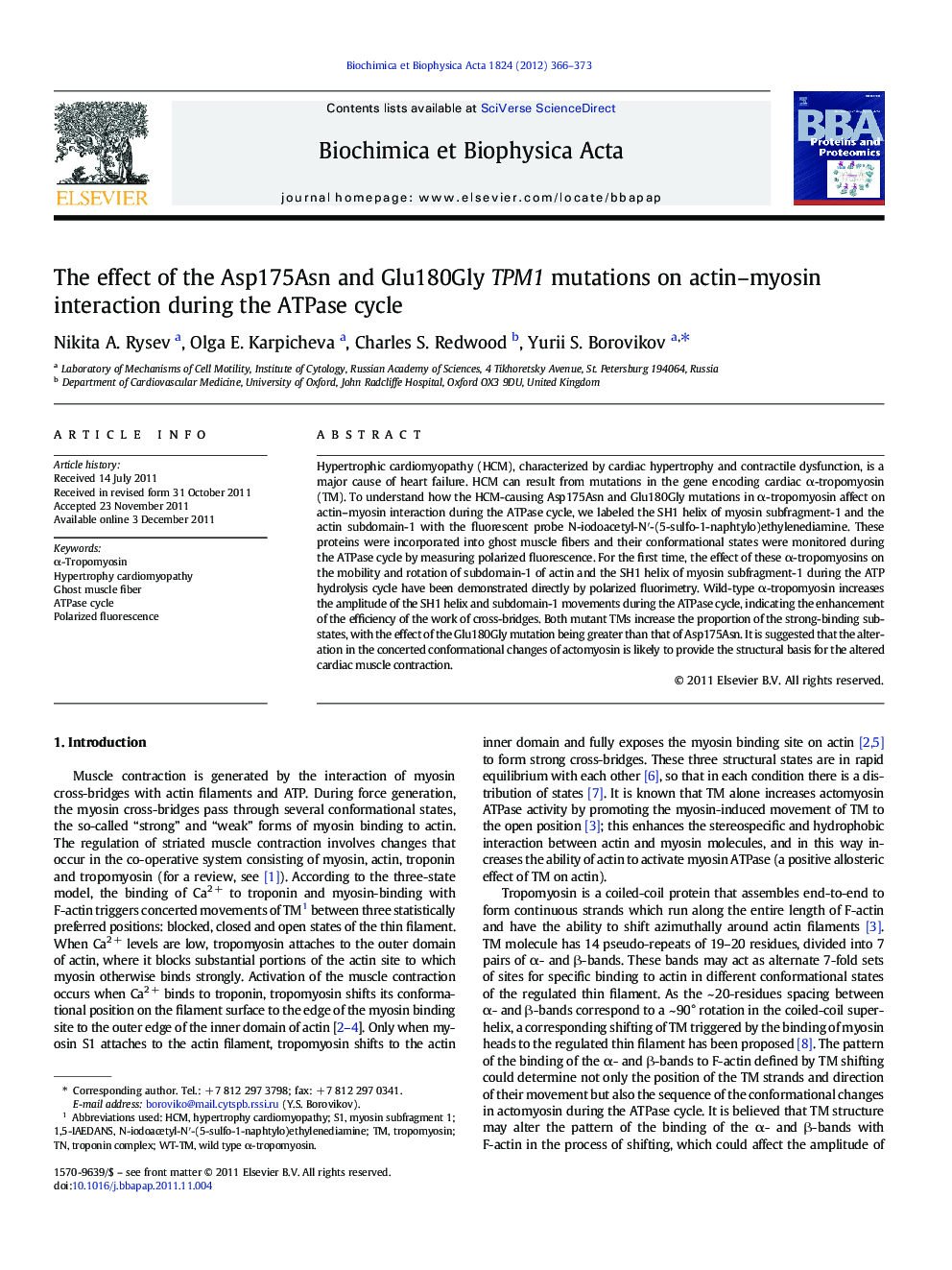| Article ID | Journal | Published Year | Pages | File Type |
|---|---|---|---|---|
| 10536862 | Biochimica et Biophysica Acta (BBA) - Proteins and Proteomics | 2012 | 8 Pages |
Abstract
Hypertrophic cardiomyopathy (HCM), characterized by cardiac hypertrophy and contractile dysfunction, is a major cause of heart failure. HCM can result from mutations in the gene encoding cardiac α-tropomyosin (TM). To understand how the HCM-causing Asp175Asn and Glu180Gly mutations in α-tropomyosin affect on actin-myosin interaction during the ATPase cycle, we labeled the SH1 helix of myosin subfragment-1 and the actin subdomain-1 with the fluorescent probe N-iodoacetyl-Nâ²-(5-sulfo-1-naphtylo)ethylenediamine. These proteins were incorporated into ghost muscle fibers and their conformational states were monitored during the ATPase cycle by measuring polarized fluorescence. For the first time, the effect of these α-tropomyosins on the mobility and rotation of subdomain-1 of actin and the SH1 helix of myosin subfragment-1 during the ATP hydrolysis cycle have been demonstrated directly by polarized fluorimetry. Wild-type α-tropomyosin increases the amplitude of the SH1 helix and subdomain-1 movements during the ATPase cycle, indicating the enhancement of the efficiency of the work of cross-bridges. Both mutant TMs increase the proportion of the strong-binding sub-states, with the effect of the Glu180Gly mutation being greater than that of Asp175Asn. It is suggested that the alteration in the concerted conformational changes of actomyosin is likely to provide the structural basis for the altered cardiac muscle contraction.
Related Topics
Physical Sciences and Engineering
Chemistry
Analytical Chemistry
Authors
Nikita A. Rysev, Olga E. Karpicheva, Charles S. Redwood, Yurii S. Borovikov,
